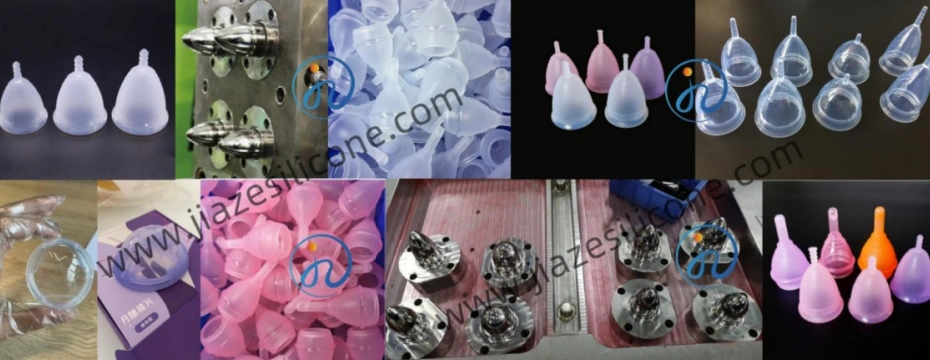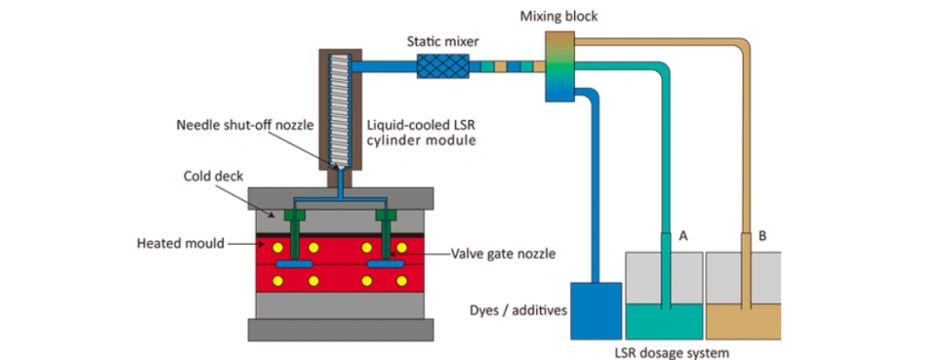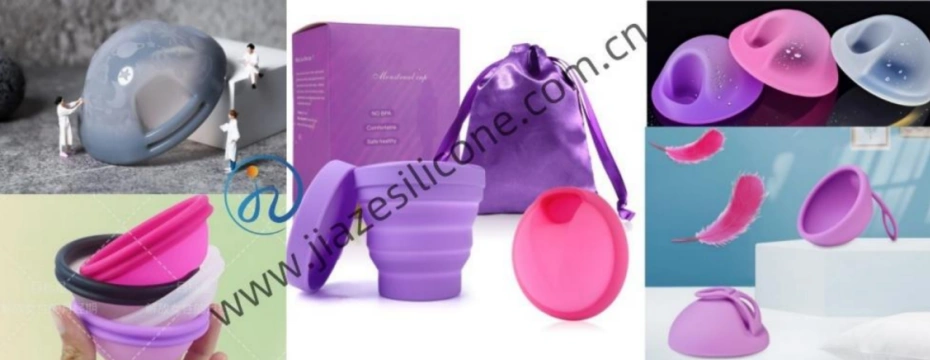Liquid Silicone Rubber (LSR) injection molding is a highly specialized manufacturing process that has become essential for producing high-quality medical and consumer products. Among its various applications, one of the most notable is the production of menstrual cups. These products, which play a vital role in menstrual health and hygiene, require precise engineering and consistent quality to meet safety, comfort, and durability standards. In this context, LSR injection molding stands out as a preferred manufacturing method, offering significant advantages in ensuring quality.

Understanding LSR and its Benefits in Menstrual Cup Production
LSR is a two-part elastomer that remains in liquid form at room temperature and cures into a flexible, rubber-like material when subjected to heat. It is widely used for products requiring biocompatibility, durability, and high-performance characteristics. The key properties of LSR that make it ideal for menstrual cup production include:
- Biocompatibility: LSR is inherently non-toxic and hypoallergenic, making it safe for prolonged contact with sensitive tissues. It meets stringent medical-grade standards, ensuring that menstrual cups are safe for users.
- Flexibility and Durability: The material’s elasticity and tear resistance provide both comfort and reliability. Menstrual cups made from LSR can maintain their shape and performance even after repeated folding and insertion.
- Temperature Resistance: LSR withstands extreme temperature variations, ensuring the menstrual cup can be sterilized through boiling or autoclaving without degrading.
- Chemical Resistance: LSR resists degradation from cleaning agents and bodily fluids, which is essential for maintaining hygiene.
- Ease of Molding: LSR’s low viscosity allows it to flow into intricate molds, enabling the production of complex designs with smooth surfaces and thin walls.
The LSR Injection Molding Process
The LSR injection molding process is a highly automated and precise technique that ensures consistent quality in menstrual cup production. The process involves the following steps:

- Material Preparation: The two components of LSR (a silicone base and a curing agent) are mixed in precise ratios. Additives, such as pigments for color or catalysts for faster curing, can be included at this stage.
- Injection into the Mold: The mixture is injected into a pre-heated mold cavity under controlled pressure. LSR’s low viscosity ensures that the material fills the mold completely, capturing fine details and achieving uniform thickness.
- Curing: Heat within the mold initiates a cross-linking reaction, transforming the liquid LSR into a solid, flexible rubber. The curing time is carefully controlled to ensure optimal material properties.
- Demolding: Once cured, the menstrual cups are carefully removed from the mold. The high tear strength of LSR ensures the cups maintain their integrity during this process.
- Post-Processing and Inspection: Excess material, such as flash, is trimmed, and the menstrual cups are inspected for defects. This stage may also involve sterilization or additional surface treatments.
Quality Assurance in LSR Injection Molding
Ensuring the quality of menstrual cups produced through LSR injection molding involves stringent control measures throughout the manufacturing process:
- Precision Mold Design: High-quality molds are essential for producing defect-free menstrual cups. Advanced computer-aided design (CAD) software is used to create molds with intricate details and smooth finishes, minimizing the risk of imperfections.
- Material Consistency: The purity and consistency of LSR are critical. Reputable suppliers provide medical-grade LSR with certifications for biocompatibility and compliance with regulatory standards such as ISO 10993 and USP Class VI.
- Process Monitoring: Automated injection molding machines are equipped with sensors to monitor parameters like temperature, pressure, and injection speed. Real-time monitoring ensures that deviations from set conditions are promptly corrected.
- Post-Molding Inspections: Visual and mechanical inspections identify defects such as air bubbles, flash, or uneven surfaces. Non-destructive testing methods, like compression or elongation tests, verify the product’s mechanical properties.
- Sterilization and Packaging: Menstrual cups must be sterile before reaching consumers. Sterilization methods, such as gamma radiation or autoclaving, are used to eliminate microbial contamination. Packaging is done in controlled environments to maintain hygiene.
Advantages of LSR Injection Molding for Menstrual Cups
The use of LSR injection molding in menstrual cup production offers several advantages:
- Consistency and Repeatability: Automated processes and precise controls ensure that each menstrual cup meets exact specifications, minimizing variability between products.
- Design Flexibility: LSR allows the production of menstrual cups with unique features, such as textured grips or venting systems, to enhance usability.
- Eco-Friendliness: LSR menstrual cups are reusable, reducing the environmental impact associated with disposable menstrual products. Moreover, the production process generates minimal waste.
- Scalability: LSR injection molding supports high-volume production while maintaining quality, making it suitable for both niche and mass-market menstrual cup brands.
- Reduced Post-Processing: The precision of LSR injection molding minimizes the need for extensive trimming or finishing, streamlining the manufacturing process.
Challenges and Solutions in LSR Injection Molding
Despite its advantages, LSR injection molding presents certain challenges, including:
- Material Handling: The low viscosity of LSR can lead to leakage or spillage during mixing and injection. Advanced equipment with precise dosing systems addresses this issue.
- Tooling Costs: High-quality molds are expensive to produce. However, the long lifespan of LSR molds and their ability to produce consistent products offset these initial costs.
- Process Optimization: Achieving the perfect balance of temperature, pressure, and curing time requires expertise. Simulation software and trial runs help fine-tune process parameters.
- Defect Prevention: Issues like flash or air entrapment can compromise product quality. Proper mold design, venting, and precise injection parameters minimize these risks.
Future Trends in LSR Injection Molding for Menstrual Cups
As demand for menstrual cups grows, innovations in LSR injection molding are likely to enhance the manufacturing process further. Key trends include:

- Sustainable Materials: Research into bio-based or recyclable silicone alternatives aims to make menstrual cups even more environmentally friendly.
- Smart Manufacturing: Integration of IoT-enabled machines and AI algorithms will improve process efficiency and quality control.
- Customization: Advances in molding technology will allow for greater customization, such as personalized shapes or sizes tailored to individual preferences.
- Improved Ergonomics: Enhanced mold designs will focus on features that improve ease of use, such as softer edges and ergonomic grips.
Conclusion
LSR injection molding is a cornerstone of quality in menstrual cup production, combining the benefits of biocompatible materials with precise manufacturing techniques. Its ability to produce durable, safe, and customizable products has revolutionized the menstrual hygiene market, offering consumers reliable and eco-friendly solutions. As technology continues to evolve, LSR injection molding will remain integral to advancing menstrual health products, ensuring they meet the highest standards of performance and safety.